Master Color Drenching in Your Home Interiors
When you think about transforming your home, contemplate the impact of color drenching. By enveloping a space in a single, bold hue, you can create a striking and cohesive look that resonates throughout your interiors. This approach can energize a room or instill a sense of calm, depending on your choices. However, it’s essential to carefully select your color palette and balance it with textures and furnishings. But before you grab that paintbrush, there are important factors to contemplate that could make all the difference in achieving the desired effect.
Understanding Color Drenching
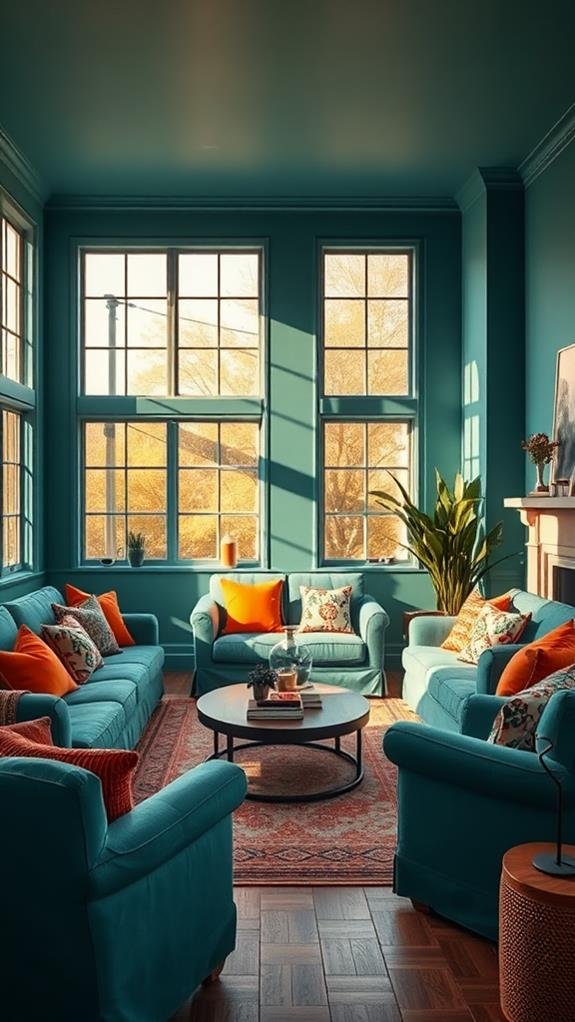
Understanding color drenching can transform your home’s atmosphere. This design technique involves painting a room in a single, bold color, creating a vibrant and immersive space.
Imagine walking into a room where the walls, ceiling, and even furniture share the same hue. It draws your eye and creates a sense of harmony.
When you choose a striking color, you influence not just the visual appeal but also the emotional feel of your home. You can use warm tones to create a cozy haven or cool colors for a revitalizing escape.
Benefits of Color Drenching
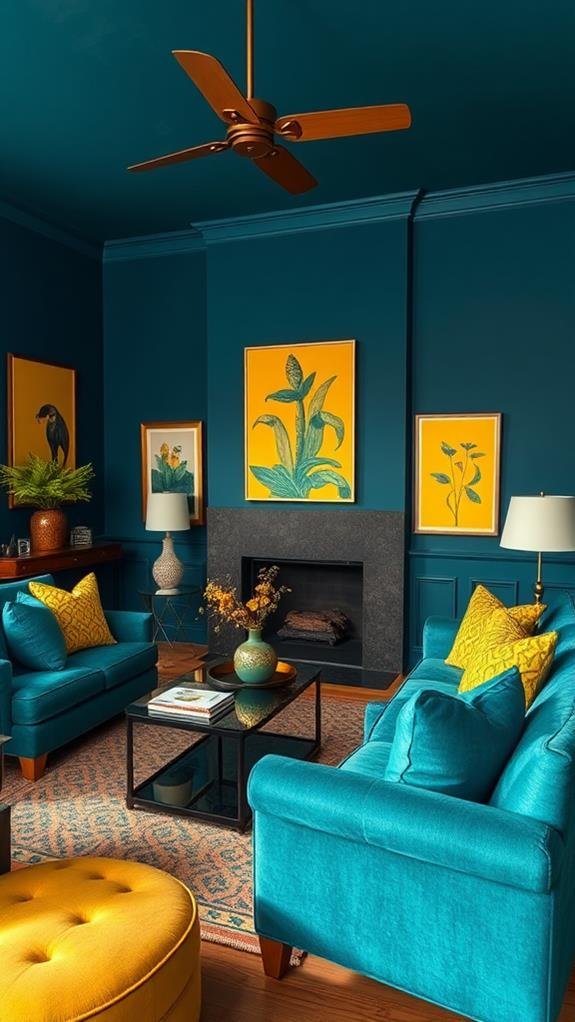
Color drenching isn’t just a striking visual choice; it offers numerous benefits for your home and well-being. For starters, it creates a harmonious atmosphere that can make any space feel more inviting.
When you surround yourself with bold colors, you might boost your mood and energy levels. Additionally, color drenching can help define areas in your home, making it easier to create distinct zones for relaxation, work, or play.
It also simplifies your design process, letting you focus on one or two shades rather than juggling multiple hues. Plus, a well-executed color-drenched room can impress guests and even make your home feel more spacious.
Choosing Your Color Palette
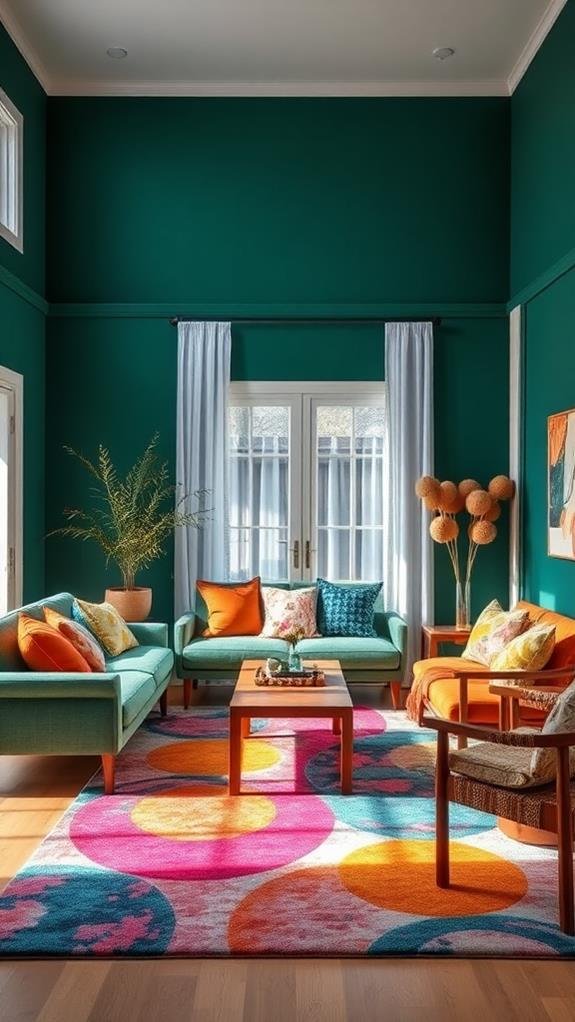
Selecting the right color palette is essential for achieving a successful color-drenched space. First, think about the mood you want to create; warm colors like reds and yellows energize, while cool colors such as blues and greens provide calm.
Next, consider the size of your room; lighter shades can make small spaces feel larger, while darker hues add intimacy.
Don’t forget to look at existing furniture and decor; you want colors that complement each other, not clash!
To make it easier, try choosing a base color and then select a few accent shades.
Impact of Bold Colors
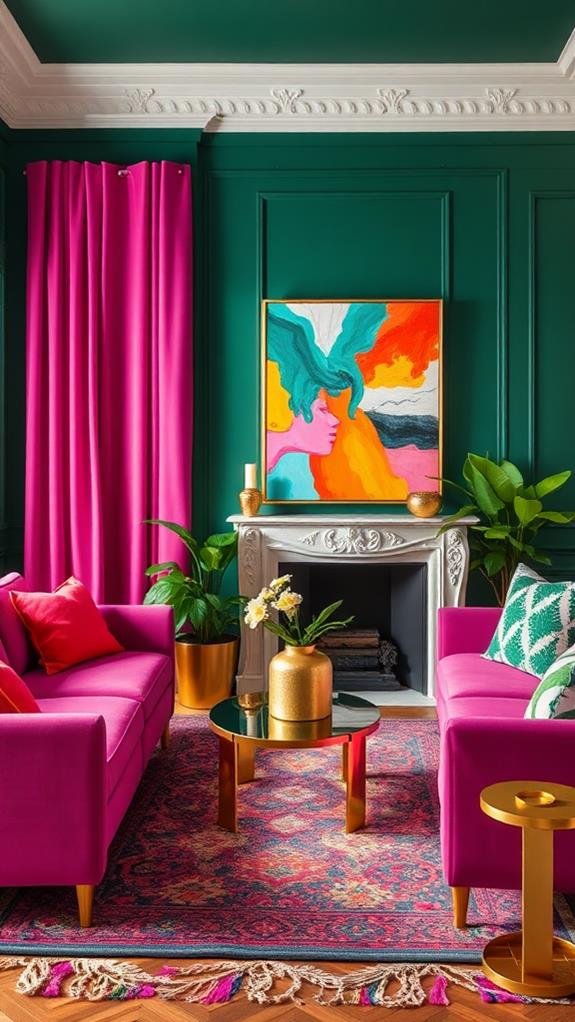
Bold colors can transform a space in remarkable ways, energizing your surroundings and making a strong statement. When you use bold colors, you create a lively atmosphere that can lift your mood and inspire creativity.
Imagine walking into a room with vibrant reds, deep blues, or striking yellows; these colors grab attention and spark conversation. They can also highlight specific areas, focusing your eye on a particular feature or piece of furniture.
However, it’s important not to overdo it—balance bold colors with neutral tones to maintain harmony. By thoughtfully weaving bold colors into your decor, you invite excitement and personality into your home, creating a unique environment you’ll love to show off to friends and family.
Walls: The Foundation
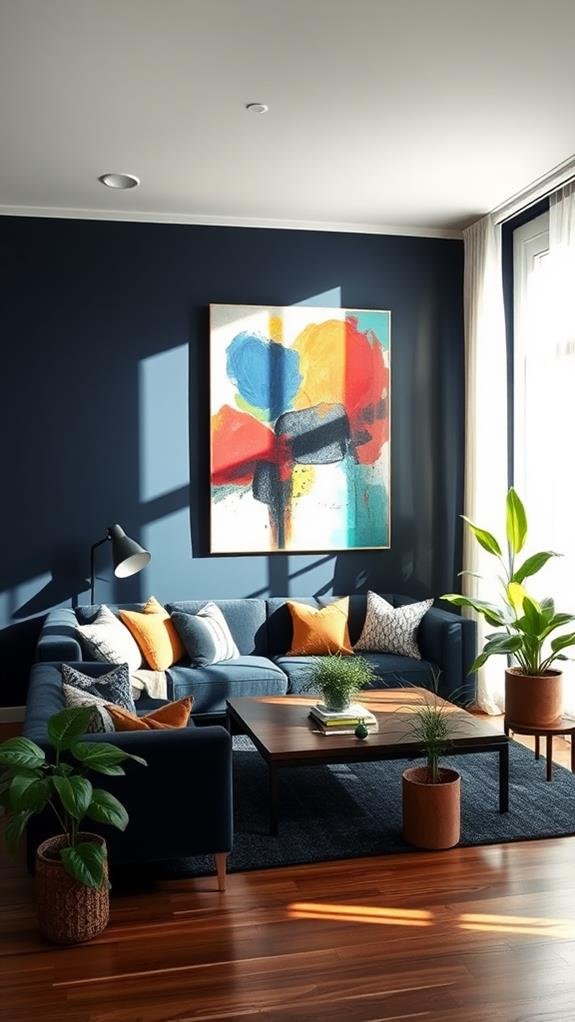
Walls serve as the canvas for your home’s design, playing an essential role in determining the overall aesthetic and mood of each room.
Choosing the right color for your walls can transform a space, making it feel cozy, spacious, or energizing. Soft hues create a calming atmosphere, perfect for bedrooms or reading nooks. On the other hand, vibrant colors can inject energy into spaces like living rooms or kitchens.
Don’t forget about texture and paint finishes, which can add depth and interest. If you’re feeling adventurous, consider accent walls to highlight a particular area.
Ceilings as Design Elements
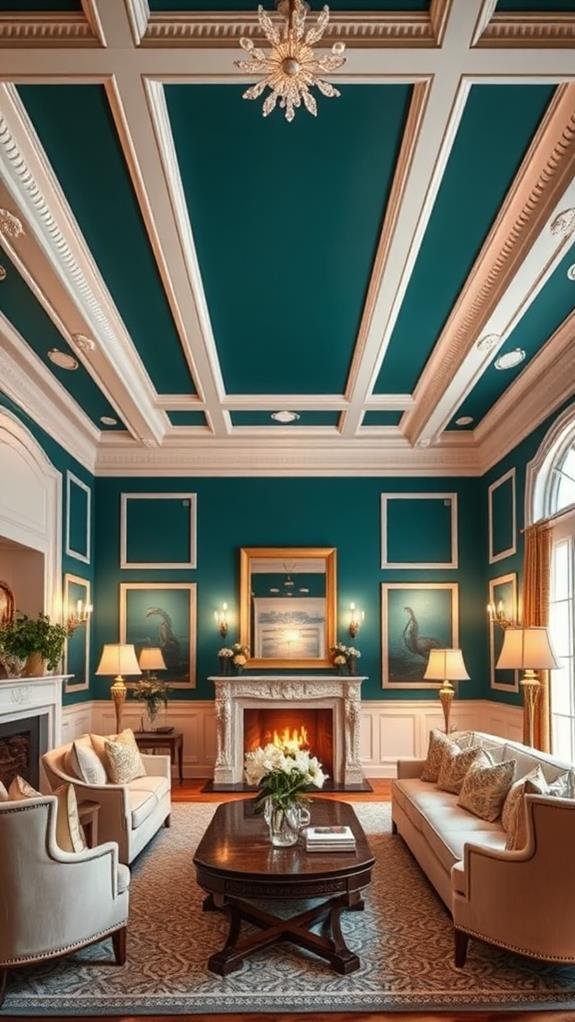
Transforming your approach to design means recognizing that ceilings can play a critical role in a room’s overall aesthetic.
When you look up, don’t just see a blank surface; consider it as an additional canvas to express your style. You can paint your ceiling a bold color or use wallpaper for a unique texture.
A lighter shade can make a room feel taller, while darker tones can create a cozy atmosphere. Adding decorative elements like beams or molding adds depth and interest.
Think about how lighting interacts with your ceiling—crown molding can reflect light beautifully.
Furniture and Color Coordination
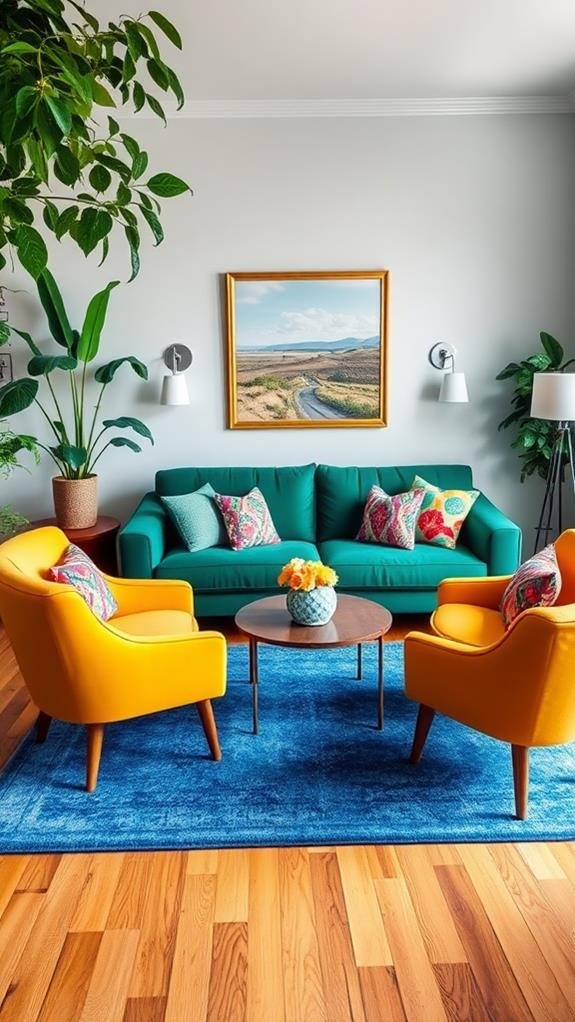
When planning your interior design, the way you coordinate furniture with colors can greatly influence the room’s ambiance.
Think about choosing furniture that either complements or contrasts with your wall colors. For instance, if you have a bold blue wall, light-colored or neutral furniture can create a balanced look. On the other hand, if your walls are neutral, using vibrant colored furniture can add excitement and personality to the space.
Don’t forget to pay attention to the shades and tones; a deep red sofa can bring warmth to a room painted in soft yellow.
Textures and Patterns Integration
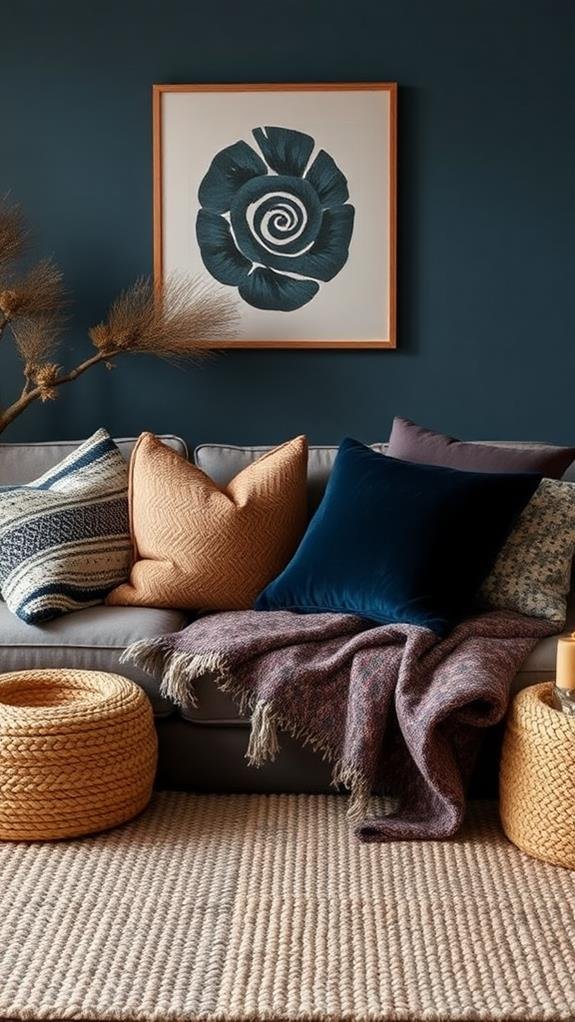
While it’s easy to focus solely on color in your interior design, integrating textures and patterns can improve your space even further.
Combining different materials like smooth, soft fabrics with rough, natural surfaces adds depth and interest. For example, pairing a plush velvet sofa with a woven jute rug creates a cozy yet dynamic feel.
Patterns can also play a significant role—think about mixing striped cushions with floral prints for a vibrant look. Just remember to keep a balance; too many contrasting patterns can create chaos.
Aim for a cohesive palette that ties everything together, letting each texture and pattern complement the other. This thoughtful integration not only brings your design to life but also makes your home distinctively yours.
Lighting Considerations
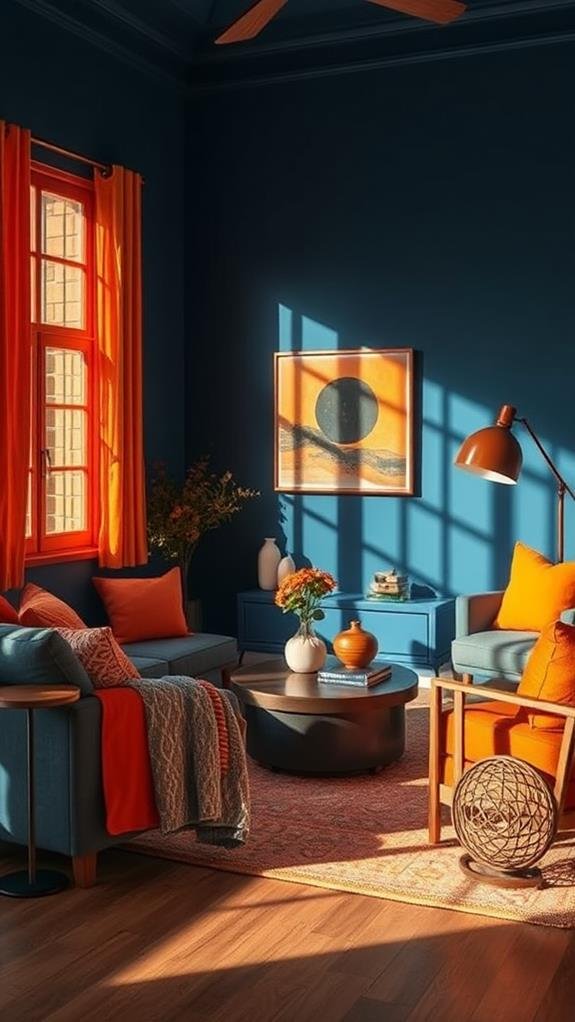
To truly improve your interior design, lighting aspects can’t be overlooked. The right lighting can bring your color choices to life, highlighting textures and patterns beautifully.
Start by evaluating natural light in your space; it shapes your room’s colors throughout the day. Next, think about the types of artificial lighting you’ll use. Layer your lights with ambient, task, and accent options to create depth and focus.
Don’t forget to reflect on the color temperature; warm light can create a cozy atmosphere, while cool light often feels more modern.
Room-Specific Applications
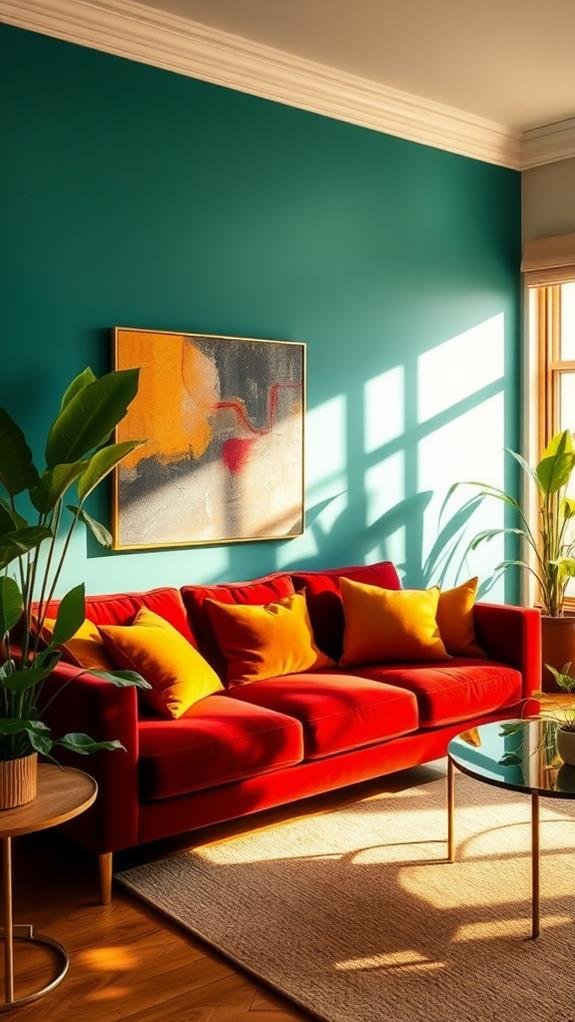
Every room in your home offers a unique opportunity to express your personal style through color drenching. In the living room, vibrant hues can create an inviting atmosphere, perfect for gatherings.
In your bedroom, softer tones may promote relaxation and comfort, helping you unwind after a busy day.
The kitchen can benefit from lively colors, sparking energy during meal prep.
For a home office, cooler shades like blues or greens can improve focus and productivity.
Remember, each space serves a different function, so consider its purpose when choosing colors.
Additionally, don’t forget about accessories; they can tie your color scheme together beautifully.
Common Mistakes to Avoid
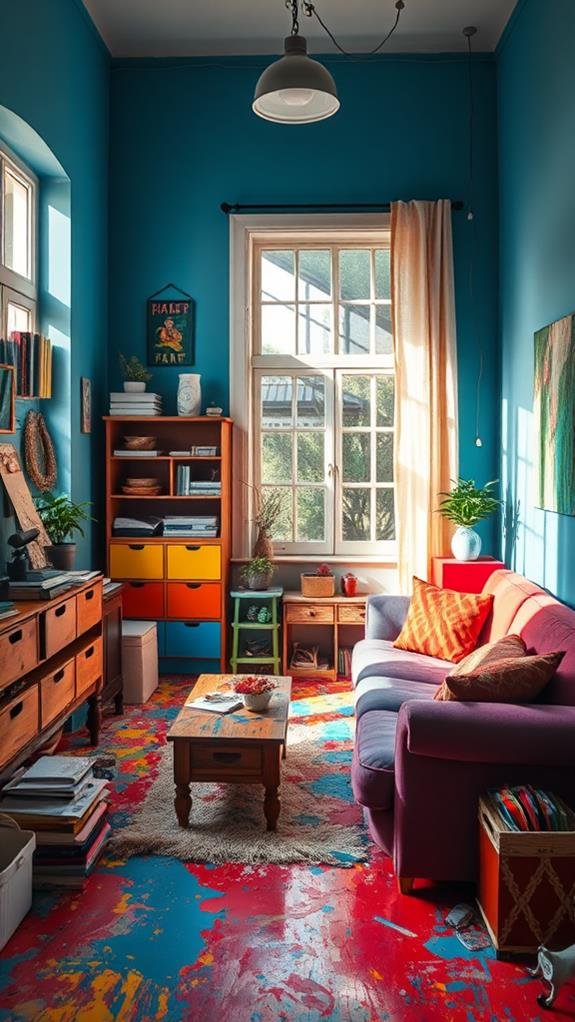
Choosing the perfect colors for your home can improve the ambiance, but it’s easy to make mistakes that can detract from your vision.
One common error is using too many colors, which can create chaos instead of harmony. Stick to a cohesive palette to maintain balance.
Another mistake is ignoring lighting; colors can change dramatically in different light, so test samples in various conditions.
Also, don’t forget to evaluate the room’s purpose; vibrant colors might energize a playroom, but they can overwhelm a bedroom.
Finally, avoid rushing your decisions. Take your time to visualize how colors will work together.
Maintenance and Longevity Tips
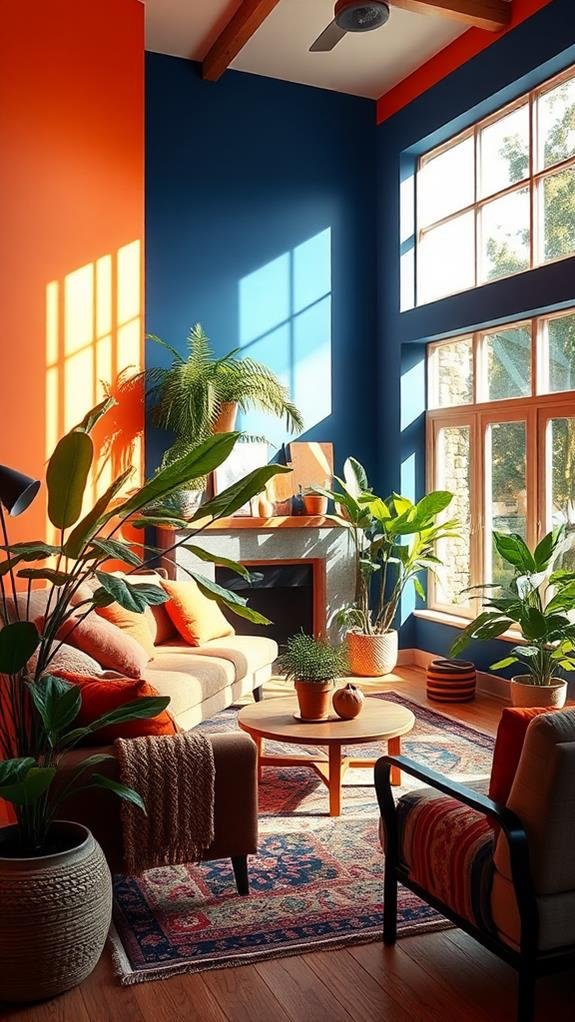
Maintaining the vibrant look of your color-drenched interiors requires regular attention and care.
Start by dusting surfaces frequently to prevent buildup; this keeps colors bright and fresh. For painted walls, wash them lightly with a damp cloth every few months to remove fingerprints and smudges.
Don’t forget to use non-toxic cleaning products that won’t dull the paint’s luster. Protect your furniture with coasters and mats to avoid scratches and stains.
Direct sunlight can fade colors, so consider sheer curtains or window treatments to filter light.
Finally, touch up any chipped paint promptly to maintain a seamless look.
Conclusion
To sum up, color drenching can truly transform your home into a vibrant and welcoming space. By carefully selecting bold hues and coordinating elements like walls and furniture, you create a stunning effect that enlivens your rooms. Remember to take into account lighting and avoid common mistakes to guarantee lasting beauty. With these tips, you’ll enjoy a cohesive atmosphere that reflects your style and makes every guest feel at home. So go ahead, welcome color and let your creativity shine!
